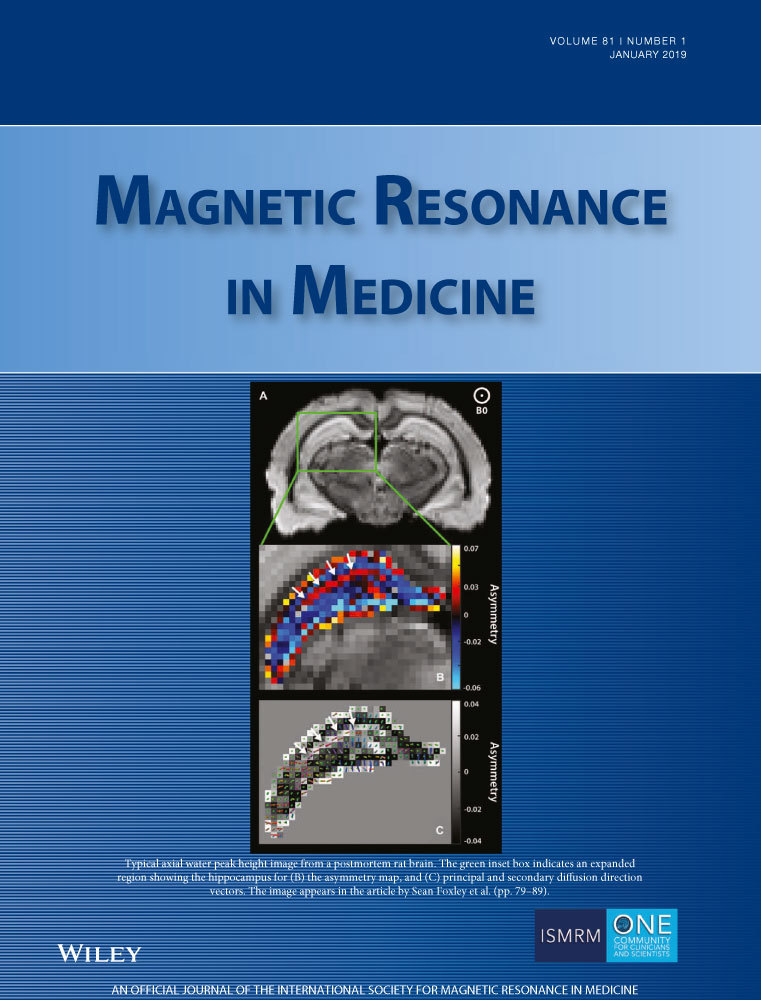Multi-echo GRE-based conductivity imaging using Kalman phase estimation method
Funding information: This research was supported by the Basic Science Research Program through the National Research Foundation of Korea, which is funded by the Ministry of Science, ICT, and Future Planning (NRF-2016R1A2B3016273); and the Hyundai Motor Chung Mong-Koo Foundation
Abstract
Purpose
To obtain in vivo electrical conductivity images from multi-echo gradient-echo (mGRE) sequence using a zero-TE phase extrapolation algorithm based on the Kalman method.
Methods
For estimation of the zero-TE phase from the mGRE data, an iterative algorithm consisting of a combination of the Kalman filter, Kalman smoother, and expectation maximization was implemented and compared with linear extrapolation methods. Simulations were performed for verification, and phantom and in vivo studies were conducted for validation.
Results
Compared with the conventional method that linearly extrapolates the zero-TE phase from the mGRE data, the phase estimation of the proposed method was more stable in situations in which nonlinear phase evolution exists. Numerical simulation results showed that the stability is guaranteed under various nonlinearity levels. Phantom study results show that this method provides improved conductivity imaging compared with the conventional methods. In vivo results demonstrate conductivity images similar to spin echo–based conductivity images with the added benefit of the acquisition of susceptibility images when using mGRE.
Conclusion
The proposed method improves zero-TE phase extrapolation, especially in regions of nonlinear phase evolution. Improved conductivity imaging using mGRE can be performed.




